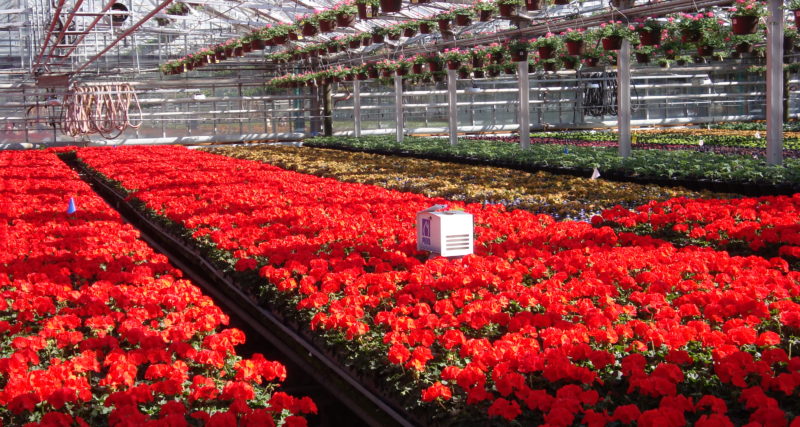
Success with PGRs
Commercial producers of floriculture crops usually rely on plant growth regulators (PGRs) to increase plant quality attributes. The primary role of most PGRs is to inhibit extension growth, so that plants are shorter and more compact. Other PGRs are applied to promote extension growth, stimulate branching or flowering, inhibit leaf yellowing, or abort flowers.
Regardless of the desired outcome, successful use of a PGR requires multiple considerations and attention to detail. This article summarizes practices to obtain the best results from your PGR applications.
Suitable product. First, be sure the PGR you select is appropriate for your desired outcome. Are you trying to inhibit stem elongation or promote it? During peak production periods, growers can be so busy that they may mistakenly grab the wrong product. To prevent this from happening, considering storing and labeling products in groupings based on desired outcomes. For example, place growth retardants in order of increasing activity, from left to right (B-Nine/Dazide g Cycocol/Citadel g A-Rest/ Abide g Bonzi/Piccolo/Paczol g Topflor g Sumagic/ Concise), and then group products with other purposes (such as to increase plant height) separately.
Spray, sprench, dip or drench? Most PGRs can be applied as a foliar spray, sprench, dip or substrate drench. Drenches are applied at relatively low concentrations but at high volumes, so that a PGR solution reaches most of the root zone. The longevity of a PGR application typically increases as the applied volume of solution increases, so sprays provide a shorter-lasting response than a drench. Thus, sprays are most appropriate for plants that will soon be transplanted, such as plugs and liners or finished crops that will be transplanted into the landscape. Drenches should be avoided late in production because plants may not suitably grow out after transplant by another grower or the consumer.
Appropriate concentration. Choosing an appropriate concentration is usually the most challenging aspect of a PGR application. The selection of a rate is highly situational and depends on the PGR, the crop and its vigor, the magnitude of the response desired, and the growing conditions. When in doubt, error on the low side; you can always return a week later if another application is needed.
Proper timing. For the greatest success, a grower needs to be intuitive, observant and proactive. Make applications just as rapid extension growth begins, such as when a canopy begins to close, or once roots reach the container bottom. Watch plants carefully and, as much as possible, make proactive (not reactive) applications. In addition, do not apply PGRs to plants that are wilted, diseased or have any other stress. This is especially important with Florel and Collate.
Practice re-entry interval (REI) restrictions. The restricted entry interval is the minimum period from application of a chemical until one can enter the area without protective clothing and equipment. REIs are made to protect workers from exposure to potentially harmful products, and from a legal perspective, must be followed. Be sure pesticide notification signs are prominently displayed and followed, beginning when applications are being made and until the end of the REI.
Apply during slow-drying conditions. Especially for sprays, the efficacy of PGR applications is greatest when there is little air movement and the relative humidity is high. This usually occurs in greenhouses early in the morning. However, morning applications can create worker challenges with the REI, in which case an application one to two hours before sunset can be the next best application time.
Take detailed notes. In addition to keeping records of what was applied and when, take written notes later about the effects of the PGR application on the different crops. Did it provide the growth control desired, or was the rate too high or too low? These notes can serve as a good reference for future PGR
applications.


 Video Library
Video Library 



















